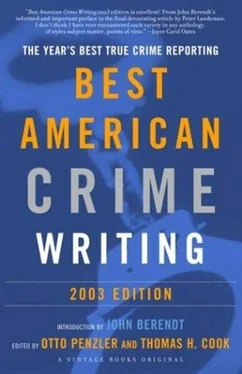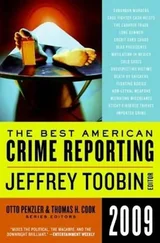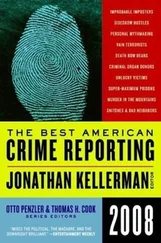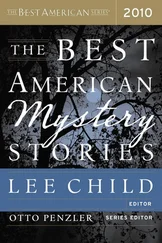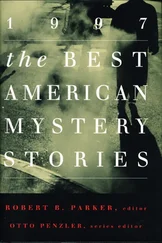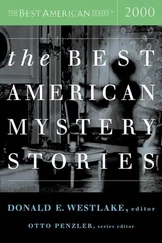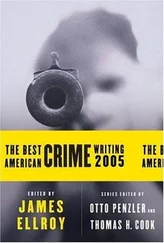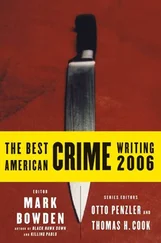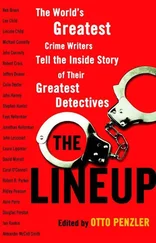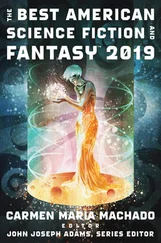The crimes Pauline Nyiramasuhuko are accused of are monstrous. Her capacity for pity and compassion, and her professional duty to shield the powerless, deserted her, or collapsed under the irresistible urge for power. But in seeking a reasonable explanation for Pauline’s barbarity, I remembered something that Alison Des Forges of Human Rights Watch told me.
“This behavior lies just under the surface of any of us,” Des Forges said. “The simplified accounts of genocide allow distance between us and the perpetrators of genocide. They are so evil we couldn’t ever see ourselves doing the same thing. But if you consider the terrible pressure under which people were operating, then you automatically reassert their humanity-and that becomes alarming. You are forced to look at these situations and say, ‘What would I have done?’ Sometimes the answer is not encouraging.”
Pauline did possess humanity, but it was in short supply, and she reserved it for her only son, Shalom, whom she had helped turn into a rapist and a killer. In one of her last moments as an engineer of the genocide, however, she returned to her role as woman and mother.
It was in July 1994, right when the Hutu army was collapsing.
Butare had descended into mayhem, and Pauline’s side had lost. One of Pauline’s neighbors, Lela, spotted the minister in the streets. “I saw Pauline and Shalom at a roadblock,” she said. “Pauline was wearing military fatigues, and she was still trying to separate Tutsis and Hutus, but the confusion was massive. There were people running everywhere. The Rwandan Patriotic Front was coming.” A short time later, Lela saw Pauline again. This time she was standing alone outside her home, looking worried.
“I was shocked,” Lela said. “She was wearing camouflage. She was standing upright in her uniform like a soldier, trying to see what was happening up and down the road. She just looked furious. She was looking everywhere for Shalom. He was her pet. She loved Shalom so much.”
***
How odd and in some ways appropriate that the reporting of this profoundly disturbing story about Rwanda began on the Pakistan-Afghanistan border, and not with me but with my wife. Ten days after September 11, I was on a plane to Islamabad and beyond, and my wife, Kimberlee Acquaro, was on her way to Kigali on a Pew Fellowship for International Journalism. We spoke nightly by satellite phone, relating the horrors before us, the ones before me unfolding and the ones before Kimberlee surviving as living memories. I was exhausted. I had been on one intensive assignment after another for nearly eighteen months, and when I returned from South Asia I almost immediately left on still another story. I was out of gas .
But Kimberlee, a photographer as well as a writer, insisted we return to Rwanda together, to make an attempt to force an Afghanistan-centered readership to pay attention to a critical, as-yet-untold story that continues to reflect the worst of us. The Rwandan genocide, all things considered, may have been human history’s most awful moment. And the woman at the heart of this particular angle, a woman mandated to care after the lives of women and children, who helped orchestrate and personally carry out a campaign of unprecedented sexual torture and mass murder, in some ways reflects the demon sleeping in us all .
I entered the reporting reluctantly. But once in Rwanda, Kimberlee and I realized that this story was emblematic of a form of warfare and human behavior that has not been addressed honestly. One million dead in ten weeks, not in a hail of gunfire and not in rooms of gas, but hacked to pieces and sexually mutilated at the hands of neighbors, friends, priests, and relatives. I became obsessed, and remain so, by the angle that in this one 8,000-word article I could not make the room to fully address: What is the source of bloodlust? Rwanda was an orgiastic frenzy of almost joyful slaughter. What in us-in me and you-permits us to slough off what we know to be true, and to allow us to club to death a best friend or skewer a baby niece?
The first drafts of this story were too upsetting to read. My editor told me that he could hardly get through them. As difficult as the details are to digest, please do know that the most difficult job in the writing of this story was to cull the imagery enough to allow the typical brunch-time reader of The New York Times Magazine to turn the page .
But this story, more than any I have written, became a Pandora’s box. It is about the relationship between the West and Africa, between white and black, between man and woman, and between a reporter and his own conscience. It took me nearly six months to accumulate the will to move on to another story. But the questions that the Minister of Rape raised (there are no answers) echo loudly and every day .
Born in Cleveland, Ohio, the son of a newspaper editor/publisher, ROBERT SAM ANSONwas educated at the University of Notre Dame. He began working for Time while still a college student and served as correspondent in the Chicago, Los Angeles, Saigon, and New York bureaus. Taken captive by North Vietnamese/Khmer Rouge forces while on assignment in Cambodia in August 1970, he was released after several weeks.
He served as chief anchorman/executive producer for special events at WNET/13 and was a senior writer for New Times magazine, a special correspondent for Life , a contributing editor for Esquire , and editor in chief of Los Angeles Magazine . At present a contributing editor at Vanity Fair , he is the author of six books and has written for, among others, The New York Times, New York , the London Sunday Times, U.S. News & World Report , and the Los Angeles Times .
Regarded as an investigative specialist, he covered Bosnia, organized crime, race riots, national politics, the New Left, the civil rights movement, and the sixties. He thinks of himself as the Susan Lucci of the National Magazine Awards.
MARIE BRENNERis writer at large of Vanity Fair and the author of five books, including the best-selling Great Dames: What I Learned from Older Women (Crown 2001) and House of Dreams: The Bingham Family of Louisville (1988).
“The Man Who Knew Too Much,” her investigation of the life of Big Tobacco whistle-blower Jeffrey Wigand, inspired the Michael Mann movie, The Insider , starring Al Pacino and Russell Crowe, which was nominated for nine Academy Awards, including Best Picture. She is the winner of three Front Page Awards and her articles have appeared in The New Yorker, New York, Vogue , and The New York Times Magazine . Her reporting on the Enron case was used as the basis for questioning during the Senate hearings on the matter.
RENE CHUNis a New York-based writer who has written for numerous publications including The New York Times, Esquire, GQ , and New York . He is currently working on a book about the former World Chess Champion Bobby Fischer, which is based on an article of his that appeared in The Atlantic Monthly .
GARY COHENlives in Washington, D.C., and writes for The Atlantic Monthly and Vanity Fair magazines.
DEVIN FRIEDMANis a senior writer at GQ magazine. He has also been on staff at Men’s Journal and Esquire . He would appreciate your not making any men’s magazine jokes. He’s written for Rolling Stone, The New York Times Magazine , and The New Yorker , among others, and he was nominated for a National Magazine Award and was a finalist for the Livingston Award. He was raised by a criminal defense attorney and used to work for the public defender’s office; it’s not surprising that he often has somewhat more compassion for criminals than normal people do.
Читать дальше
